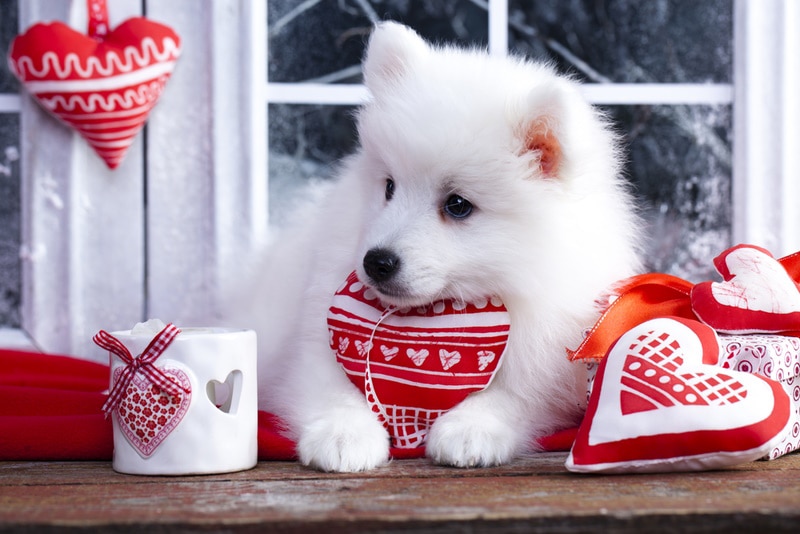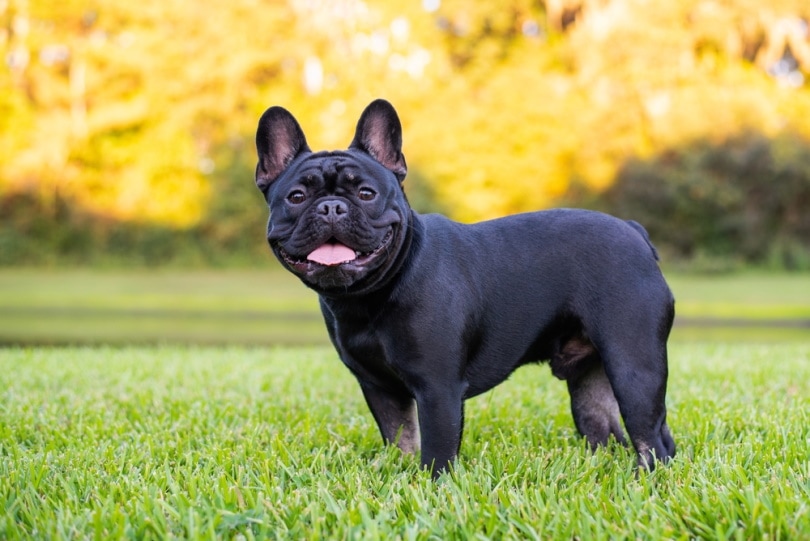Tibetan Mastiff vs. English Mastiff: The Differences (With Pictures)
Updated on
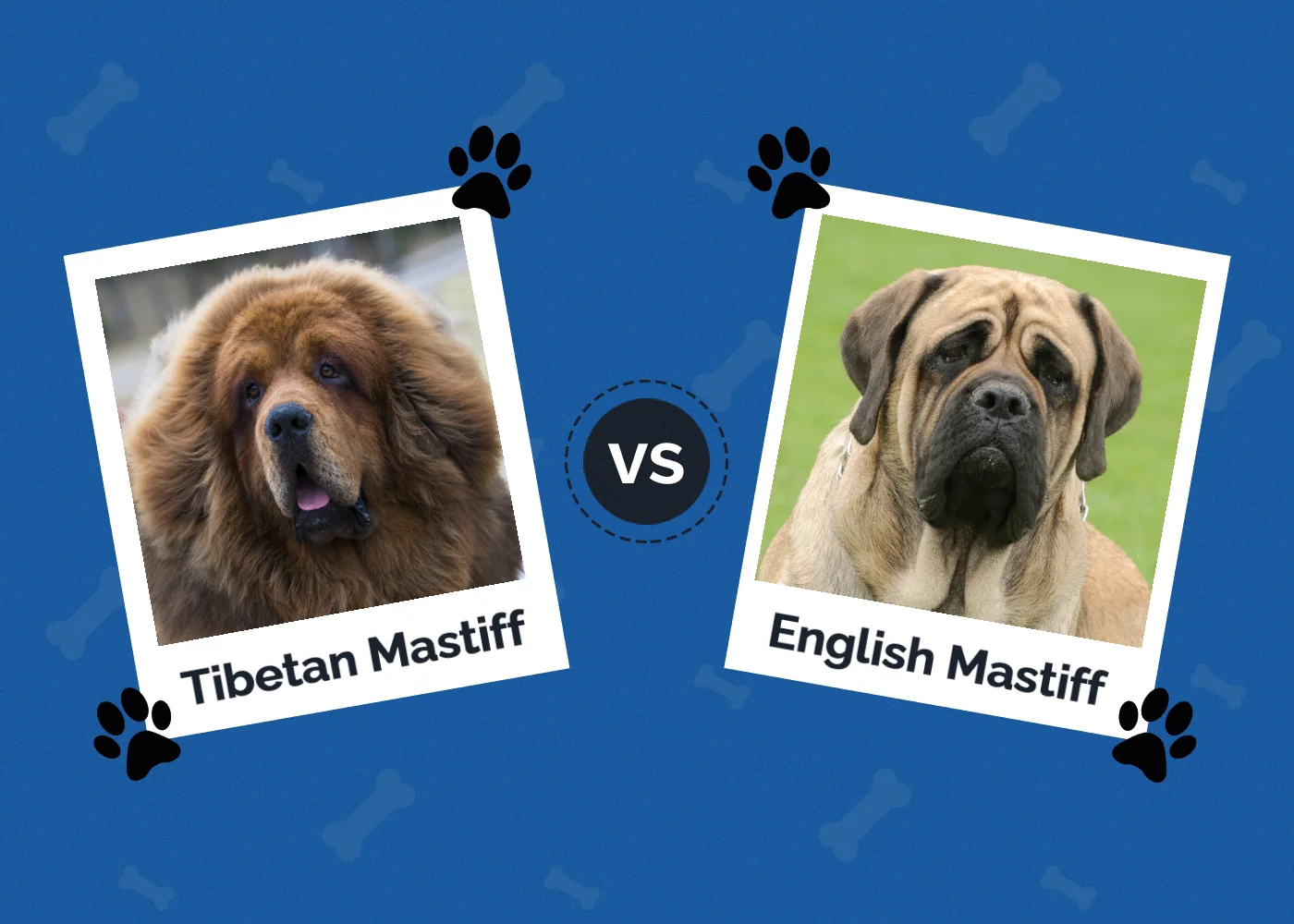
You may have considered a Mastiff if you’re looking for a giant dog breed. There are a few Mastiff breeds, and in this guide, we’ll compare the Tibetan Mastiff and the English Mastiff. Both breeds make excellent watchdogs and guard dogs, and they are both giant breeds. The English Mastiff is larger but has more of a good-natured side, whereas the Tibetan Mastiff is aloof and can be stubborn. However, both breeds have unique qualities they can bring to any family.
Read on to learn more about these two breeds so that you can compare them side-by-side to determine which one is right for your family. Let’s begin!
Visual Differences

At a Glance
- Average height (adult): 24–26 inches
- Average weight (adult): 90–150 pounds (male), 70–120 pounds (female)
- Lifespan: 10–12 years
- Exercise: 1+ hours a day
- Grooming needs: Minimal
- Family-friendly: Yes
- Other pet-friendly: Yes, with early socialization
- Trainability: Intelligent, stubborn, does not respond well to traditional training
- Average height (adult): 27 ½ –30 inches
- Average weight (adult): 160–230 pounds (male), 120–170 pounds (female)
- Lifespan: 6–10 years
- Exercise: 1 hour a day
- Grooming needs: Minimal
- Family-friendly: Yes
- Other pet-friendly: Yes, with early socialization
- Trainability: Intelligent but can be stubborn
Tibetan Mastiff Overview
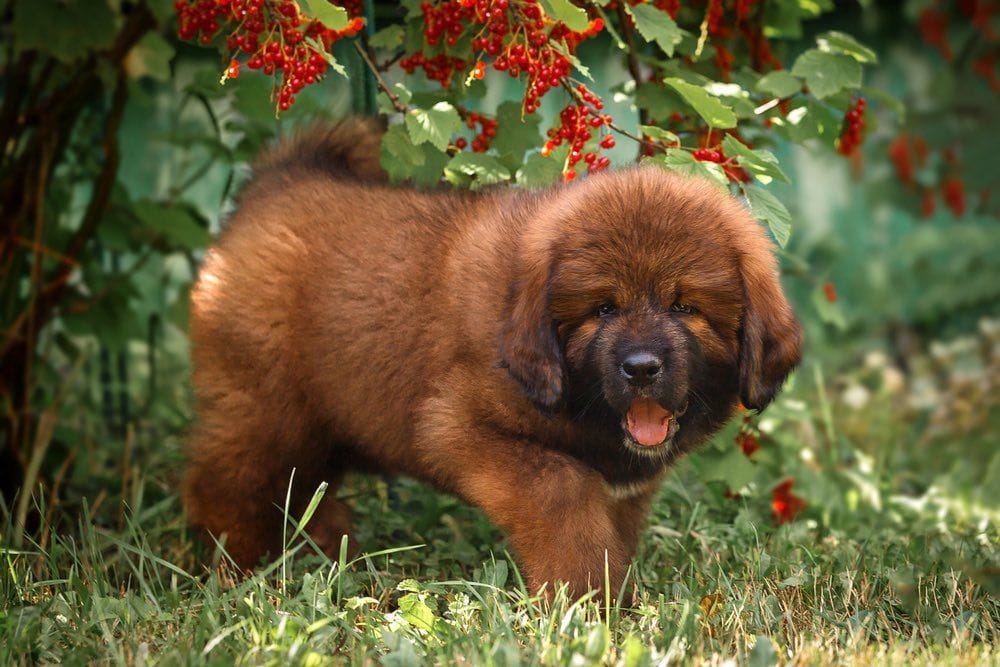
The Tibetan Mastiff is a giant dog breed with the coat on the neck resembling a lion’s mane. Males reach up to 150 pounds with a height of 30 inches and up. We don’t know the exact genetic heritage of these dogs, but what we do know is this ancient breed was developed in the Himalayan Mountains thousands of years ago, roughly around 1,100 BC. Skeletal remains found in China indicate that these dogs have been around since the stone and bronze ages and could very well be the source from which modern working breeds descend.
These dogs were bred to protect flocks and herds from predators for Tibetan villagers and nomads who lived in the Himalayan Mountains. They were first introduced into the Western world in 1847 when the breed was brought to London, but the breed wasn’t recognized by the American Kennel Club (AKC) until 2006. It’s not fully known when the Tibetan Mastiff made its way to the United States; however, a pair of these dogs were given as a gift to President Eisenhower from the foreign ministry of Nepal in 1958. However, the dogs ended up on a farm in the Midwest.
Personality / Character
Part of the working group, the Tibetan Mastiff is aloof, watchful, intelligent, independent, and reserved. They can be territorial and possibly aggressive with other dogs, but if you want to pair this breed with another, it’s best to stick to the opposite sex. They are supreme guard dogs and watchdogs, and their alertness may be heightened at night. Their bark is loud and may cause you to jump out of your skin. They only bark, however, when a threat arises.
These giant dogs are leery of strangers, and you’ll need to be on guard when family and friends come over when meeting your Tibetan Mastiff. Your Tibetan Mastiff will let his guard down once he realizes the strangers are not a threat.
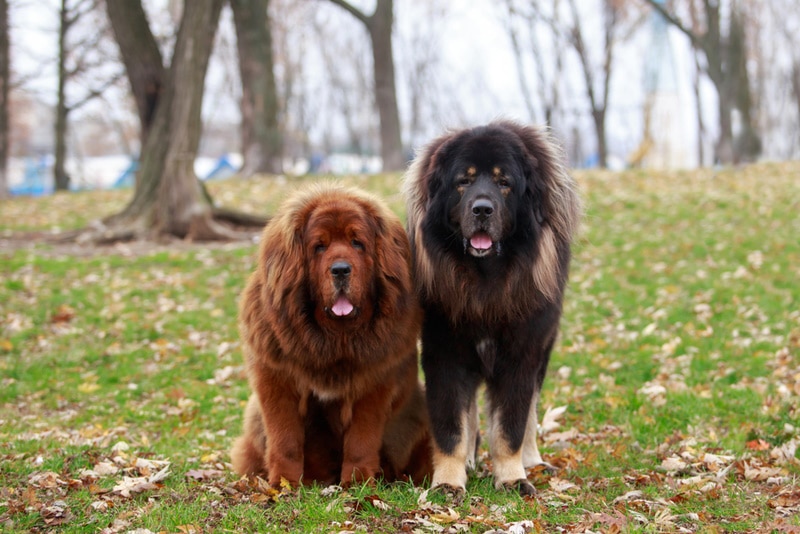
Training
We’ve mentioned the Tibetan Mastiff is intelligent, but when it comes to training, they are almost too smart for their own good. These dogs are easy to train, as they are intelligent enough to learn commands and tricks, but they can become rather bored with traditional training methods and ignore your commands after a while. Training a Tibetan Mastiff takes patience, persistence, and time.
This breed is not recommended for first-time dog owners, and their stubbornness and independence require an experienced dog owner who can show leadership. However, with proper training, these dogs are sweet, loyal, and devoted family members that are very protective of their property and families.
Health & Care
Caring for a Tibetan Mastiff is not much different from the care you would give any other breed. Ensure you feed a high-quality dog food with a healthy protein that is age-appropriate. Limit treats to account for only 10% of your Tibetan Mastiff’s daily diet.
As with any breed, these dogs may be prone to certain genetic medical conditions. Such conditions to watch for are minor eye problems, specifically entropion and ectropion, elbow and hip dysplasia, and hypothyroidism. Given they are prone to elbow and hip dysplasia, adding glucosamine and chondroitin can help keep their joints healthy. Ensure you take your Tibetan Mastiff for yearly checkups, and brush the double-layered coat regularly with a de-shedding tool. Never leave your Tibetan Mastiff outdoors in hot weather, as the double-layered coat makes them hot and can cause heatstroke.

Suitable For:
The Tibetan Mastiff is suitable for an experienced dog owner who knows how to show leadership and those willing to dedicate the time it takes to train this breed. Given this dog breed is intelligent yet stubborn, training can be somewhat of a challenge. This breed is also suitable for those with plenty of indoor and outdoor space, where the Tibetan Mastiff can roam freely in a safe environment and a fenced yard.
Tibetan Mastiff owners must be willing to socialize this breed early to reduce behavioral problems, and ideally, this breed should be the only dog in the home. If you want to add another dog, ensure it’s of the opposite sex for a better pairing.
English Mastiff Overview
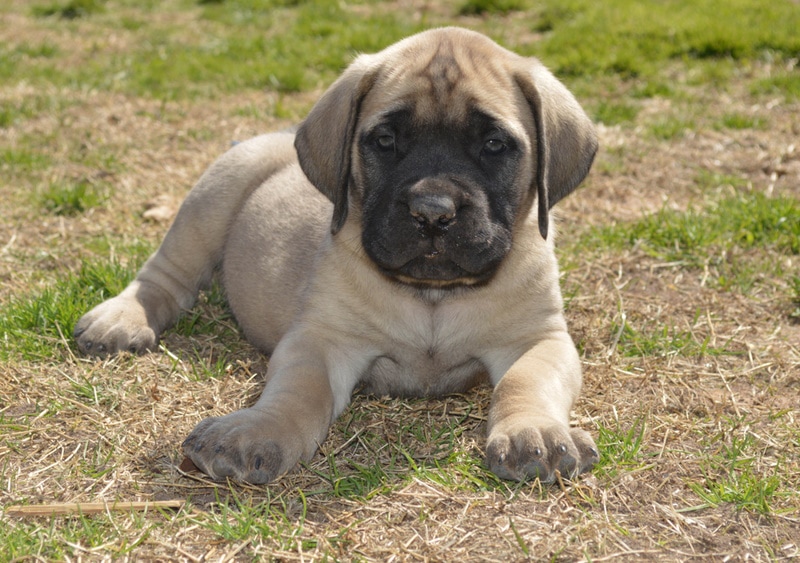
The English Mastiff is mammoth in size and weight and is bigger than their Tibetan Mastiff counterpart. Males can reach up to 230 pounds with a height of 27 ½ inches or more. The Mastiff is a noble, ancient breed, dating back to 55 BC when Julius Caesar invaded Britain. Caesar was impressed enough to transport some of them back to Rome, where they would participate in battles with human gladiators and wild beasts in the Colosseum. Eventually, these dogs made their way to North America via the Mayflower. These dogs worked as guardians and hunters in Europe and are still a popular giant breed today.
Personality / Character
This breed is dignified, courageous, good-natured, patient, and calm. Make no mistake; they quickly call to action should a threat arise. They are fierce protectors of their families and are loyal and loving companions. They are wary of strangers due to their protective nature and history of being guard dogs, so introducing new people should be cautiously exercised.
They do well with children and other pets; however, early socialization is advised during puppyhood for the best outcome. Even though they are gentle giants and do well with children, supervision is advised around small children due to the Mastiff’s gigantic size, and a small child could be bumped or accidentally knocked over. Children should also be gentle and know how to interact calmly with these dogs.
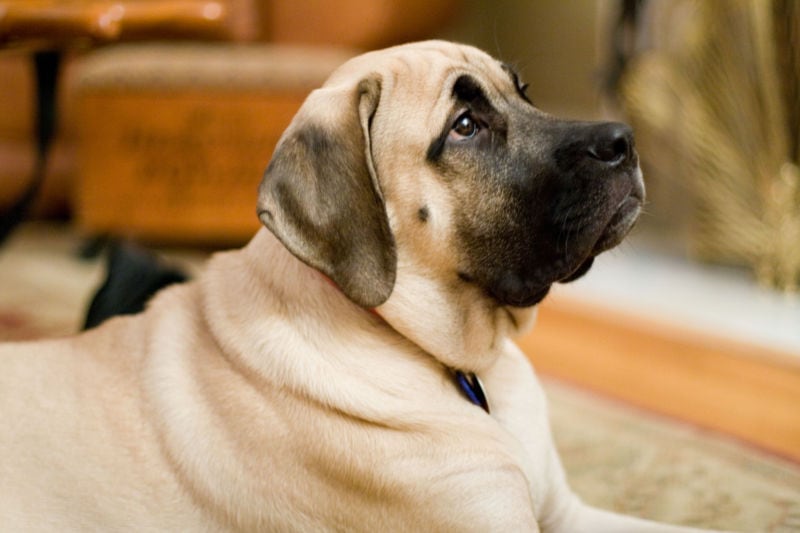
Training
Unlike the Tibetan Mastiff, the English Mastiff is eager to please when it comes to training. On the other hand, much like the Tibetan Mastiff, they can also get rather bored with traditional training. It’s best to keep training sessions short to hold the English Mastiff’s attention. They are quick learners and respond best with positive reinforcement.
Health & Care
Like the Tibetan Mastiff, the English Mastiff requires high-quality dog food with a quality protein. Feed an age-appropriate dog food 2 to 3 times daily instead of one large meal. Mastiffs are deep-chested dogs and can be prone to bloat, a serious condition in which the stomach twists, cutting off blood flow to the heart. The condition is fatal if not addressed immediately. It’s also recommended to avoid using elevated food bowls and avoid exercise around meal times to reduce the risk of bloat.
This breed can be prone to genetic medical conditions, such as elbow and hip dysplasia. Adding glucosamine and chondroitin can aid in keeping the joints healthy. Other possible medical conditions the Mastiff may inherit are skin allergies and certain eye problems like entropion, ectropion, cataracts, and progressive retinal atrophy. Cancer and degenerative myelopathy are also possibilities.
These dogs have short coats that are relatively low maintenance—brushing the coat once a week should suffice. However, they do have skin folds that can become infected if not kept clean. You can use facial wipes to clean the adorable skin folds on the face to keep bacteria, debris, and moisture out of the crevices. Ensure you keep up with yearly checkups, and give your Mastiff at least 1 hour of exercise daily.
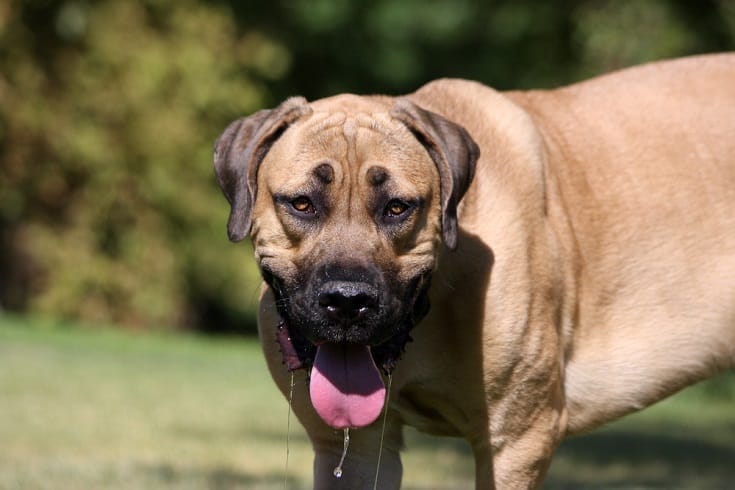
Suitable For:
These dogs do best with families with plenty of yard space for these large dogs to play and roam. Despite their gentle and calm nature, it’s best to avoid owning a Mastiff with children due to their enormous size. They are not aggressive but do not realize their size and strength and may accidentally knock over a child. These dogs make excellent companions and are sweet and loving. Due to their size, a family must be willing to share their space with them.
Which Breed Is Right for You?
Both breeds make excellent companions, but there are a few differences to consider before making a decision. The Tibetan Mastiff is recommended for experienced dog owners who can show leadership. This breed also takes an experienced dog owner on the training side of things since they can be stubborn and get bored with traditional training. They do best being the only dog in the home, but it’s possible to pair them with another dog of the opposite sex. As a Tibetan Mastiff owner, be prepared for loud barks; however, they only bark when a threat arises. With the proper training, they make loyal family members and companions.
The English Mastiff is more good-natured and eager to please, but they are considerably bigger than the Tibetan Mastiff. They, too, can get bored with traditional training but are quick learners. Keep the training sessions short for the best outcome. Despite their enormous size, they are gentle giants and make excellent family companions.
Both breeds require minimal grooming, but given the Tibetan Mastiff’s double coat, they do best in cooler climates. If you’re looking for an exceptional watchdog and guard dog, you can’t do wrong with either one.
Related Reads:
- English vs American Mastiff: The Differences (With Pictures)
- 8 Different Types of Mastiff Dog Breeds (With Pictures)
Featured Image Credit: Left – Tibetan Mastiff (Liliya Kulianionak, Shutterstock) | Right – English Mastiff (Waldemar Dabrowski, Shutterstock)



